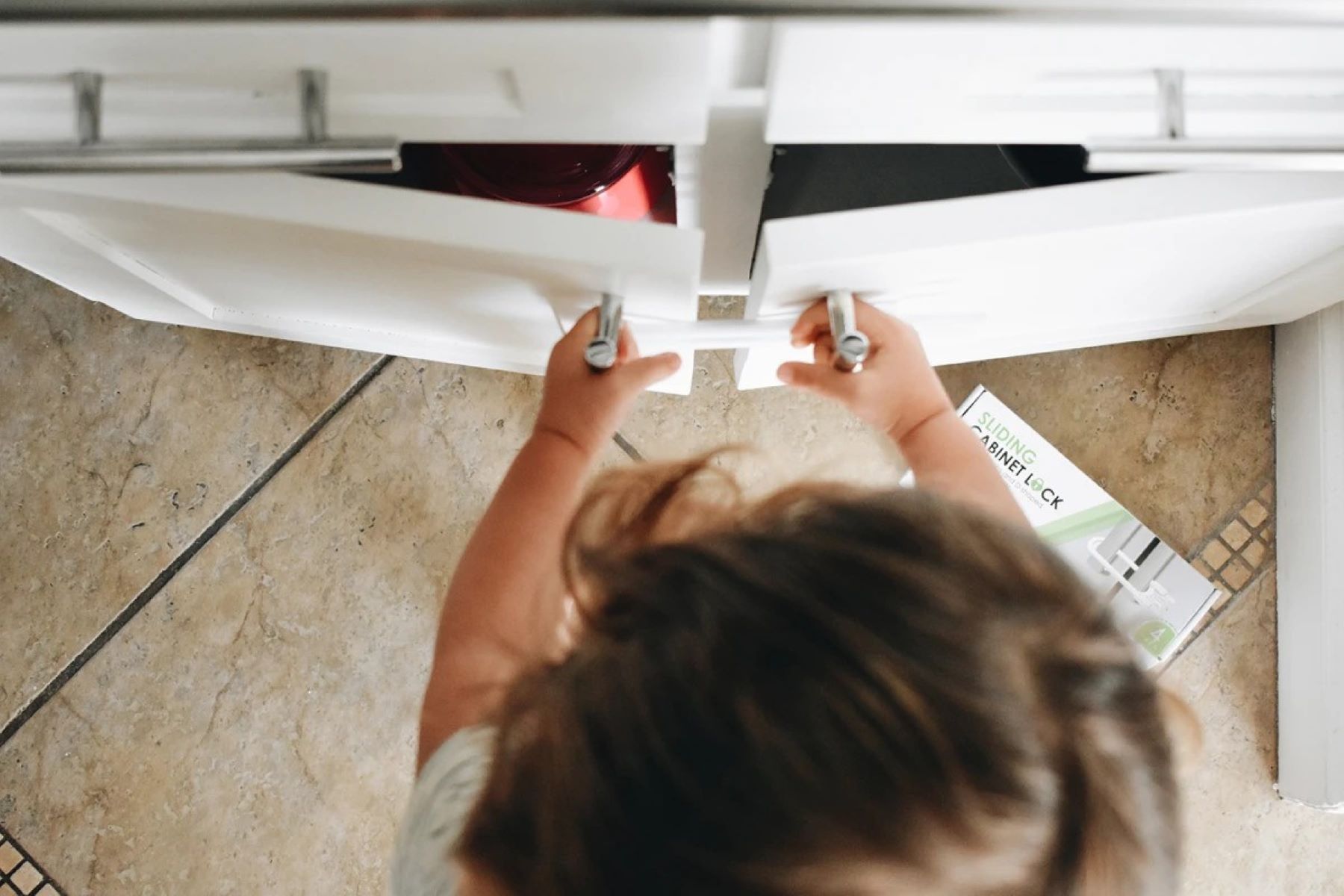Cabinet Lock Mechanisms

Right, so you’ve sorted the intro, boss, and you’re ready to get your gaff properly childproofed. Let’s crack on with the nitty-gritty of cabinet locks. Choosing the right ones is mega important, innit? You want something that’s both effective and not a total faff to install.
Cabinet Lock Types: A Comparison
Choosing the right lock is a proper game-changer, mate. Different locks have different vibes, and some are way easier to fit than others. This table breaks down the main types, so you can pick the perfect one for your gaff.
| Lock Type | Installation Difficulty | Effectiveness | Cost |
|---|---|---|---|
| Magnetic Locks | Easy peasy. Usually just stick ’em on. | Pretty good for drawers, not so much for doors that get bashed about. | Cheap as chips. |
| Strap Locks | A bit more fiddly than magnetic ones, but still pretty straightforward. | Solid choice, keeps little hands out pretty well. | Mid-range price. |
| Childproof Latches | Can be a bit of a ballache, especially on tricky cabinets. Might need a drill. | Top-notch security, these are proper hardcore. | A bit more pricey, but worth it for peace of mind. |
Installing Different Lock Types
Here’s the lowdown on getting those locks fitted. Remember, always check the manufacturer’s instructions first, yeah?
Best way to baby proof cabinets – Magnetic Locks:
- Clean the cabinet surface properly.
- Peel off the backing and stick the lock in place.
- Job done! Easy peasy.
Strap Locks:
- Measure and mark the placement of the straps.
- Use a screwdriver (probably a Phillips head) to attach the straps to the cabinet.
- Adjust the straps to fit snugly.
Childproof Latches:
- Mark the placement of the latch and the receiving plate.
- Drill pilot holes (if necessary) and attach the latch and plate using screws.
- Test to make sure it’s secure and the little one can’t get in.
Lock Placement Guide
Think about where you’re putting the locks, bruv. It’s not just about sticking them anywhere.
Imagine a kitchen. You’d want locks on the lower cabinets containing cleaning products and things like that, and maybe on the higher cabinets that hold breakables. Corner cabinets often need a bit more thought – you might need a different type of lock to fit properly.
Visualise this: A lower cabinet with a childproof latch, secured to the inside of the door, so the little one can’t reach the catch. Then picture an upper cabinet with magnetic catches on the doors to stop them from opening, preventing access to delicate glassware. Finally, picture a corner cabinet with a strap lock, its sturdy design able to handle the slightly awkward angles and pressure.
Creating a Safe Environment Beyond Cabinet Locks: Best Way To Baby Proof Cabinets

Right, so you’ve sorted the cupboards, mega kudos! But, babes, baby-proofing ain’t just about those pesky kitchen units. It’s a whole vibe, a total lifestyle change, innit? Think of it like this: you’re building a mini-fortress of safety, one tiny step at a time. It’s all about creating a space where your little cherub can explore and learn without ending up in A&E.
Electrical Outlets and Cords
Sorted the cupboards? Wicked! But those little electric sockets are like magnets for tiny fingers. Seriously, they’re death traps waiting to happen. Get yourself some plug socket covers – the ones that fit snugly and are a proper faff to get off. Then, think about those trailing wires – chargers, lamps, the lot. Tuck ’em away neatly, use cable ties, or even get some of those cord organisers that stick to the wall. You want to make sure everything’s out of reach and that there are no dangling hazards that could cause a nasty trip or pull.
Sharp Edges and Corners
Little ones are basically human wrecking balls, right? They’re gonna bump into everything, so you need to be prepared. Corner protectors are your best mate here. They’re cheap as chips and come in all sorts of colours, so you can even make it look a bit stylish. Plus, think about coffee tables, low-level furniture – anything with sharp corners or edges needs padding. And while you’re at it, have a good old sort through and get rid of anything that’s potentially dangerous.
Stairways and High Places, Best way to baby proof cabinets
Stairs are a right nightmare, aren’t they? You’ll need a stair gate, and I mean a proper sturdy one that’s securely fixed. Don’t skimp on this one – your little one’s safety is paramount. Same goes for high places. Windows need locks that are impossible for tiny hands to operate. And anything that could be toppled over – bookshelves, tall plants – needs to be secured or moved to a safer spot.
Cleaning Products and Medications
This is a biggie. Keep all cleaning products, medicines, and other potentially harmful substances locked away securely – ideally in a high cupboard with a child-resistant lock. Never leave anything out on display, even for a sec. It’s not worth the risk. Seriously, treat these things like they’re gold bullion, that’s how precious your little one’s safety is.
Creating a Safe Environment at Different Stages
Baby-proofing isn’t a one-off job. It’s an ongoing process that needs to adapt as your little one grows and develops. As they get older and more mobile, you’ll need to adjust your safety measures accordingly. For example, what was safe for a crawling baby might be a hazard for a toddler who’s starting to climb. Keep an eye on their progress, and don’t be afraid to adjust your strategy as needed. Think of it as a game of cat and mouse, but with much higher stakes.
